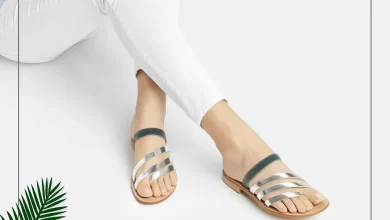The Ultimate Guide to Wedding Invitations
Introduction
Wedding invitations are more than just a way to inform your guests about the date and location of your wedding; they set the tone for your entire event. The style, wording, and presentation of your invitations provide the first glimpse into the theme and formality of your big day. In this guide, we’ll cover everything you need to know about choosing, designing, and sending wedding invitations that perfectly reflect your special celebration.
Understanding Different Types of Wedding Invitations
There are several types of wedding invitations, each catering to different styles and preferences:
Traditional Invitations
Traditional invitations feature classic designs and formal language. They often include elements such as embossed details, elegant fonts, and high-quality paper, creating a timeless and sophisticated look. These invitations are perfect for formal weddings and are usually printed on thick, luxurious paper stock.
Modern Invitations
Modern invitations use sleek designs, casual wording, and innovative materials. These are ideal for couples who want a contemporary feel and may incorporate geometric patterns, minimalist graphics, or bold color schemes. Modern invitations often use unique textures and finishes, such as metallic foils or acrylic, to stand out.
Themed Invitations
Themed invitations are designed to match the wedding’s specific theme, such as rustic, vintage, or beach. These invitations often use relevant imagery and motifs to give guests a preview of the wedding’s ambiance. For instance, a rustic-themed invitation might include natural elements like wood grain textures and floral designs.
DIY Invitations
DIY invitations offer a personalized and handcrafted touch. They can range from simple, homemade designs to intricate, custom creations, allowing couples to infuse their unique style and creativity into their invites. DIY invitations are perfect for crafty couples who want to add a personal touch to their wedding.
Choosing the Right Design
Selecting the right design involves several key elements:
Color Schemes
Coordinate your invitations with your wedding colors and the season. This ensures a cohesive look and helps guests get a sense of the event’s overall palette and vibe. For a summer wedding, bright and vibrant colors may be appropriate, while a winter wedding might call for more subdued, elegant tones.
Typography
The choice of fonts is crucial in conveying the style of your Wedding Venue & Reception invitations. Elegant fonts suit formal weddings, while whimsical or modern fonts are better for casual or contemporary events. Typography can dramatically change the feel of an invitation, so it’s important to choose fonts that match the overall theme.
Illustrations and Graphics
Add personal touches like monograms, custom artwork, or illustrations that reflect your personalities or theme. This can make your invitations truly unique. For example, you might include a custom illustration of your wedding venue or a sketch that represents a shared hobby.
Paper Choices
The type of paper you choose can impact the feel of your invitations. Options include textured, glossy, or recycled paper, each providing a different aesthetic and tactile experience. Textured paper can add a luxurious feel, while recycled paper is a great eco-friendly option.
Essential Information to Include
Ensure your invitations are informative and clear by including the following details:
Names of the Couple
Make sure the names are clearly presented and correctly spelled. This is the centerpiece of your invitation and should be prominently displayed.
Date and Time
Prominently display the date and time of the wedding to avoid any confusion. Ensure that this information is easily readable and stands out on the invitation.
Venue Details
Include the full address of the venue, along with a map or directions if necessary. Special instructions, such as parking details, can also be helpful. This ensures that guests know exactly where to go and how to get there, especially for a destination wedding.
RSVP Instructions
Provide a clear deadline for RSVPs, along with contact information or a response card. This helps you manage your guest list effectively. Make sure to include an easy way for guests to respond, whether it’s a reply card, email, or website.
Dress Code
While optional, indicating the dress code can help guests dress appropriately for your event. This can prevent any confusion and ensure that guests are dressed in line with the formality of your wedding.
Wording Your Invitations
The wording of your invitations should match the tone of your wedding:
Formal vs. Informal
Decide on the tone based on your wedding style. Formal weddings typically use traditional wording, while informal weddings can be more relaxed and creative. For example, a formal invitation might read, “The honor of your presence is requested,” while an informal one might say, “Join us for a celebration of love.”
Creative Wording Examples
Experiment with fun and unique ways to phrase your invites. This can add a personal touch and set the mood for your event. For instance, you might include a playful rhyme or a quote that holds special meaning for you and your partner.
Including Parents’ Names
Consider whether to include parents’ names based on family dynamics and tradition. This can vary between traditional and modern approaches. Traditional invitations often include the names of the bride’s parents, while modern ones might simply list the couple’s names.
Hosting Line
Clarify who is hosting the wedding and how to word it appropriately, whether it’s the couple, their parents, or both. This line traditionally appears at the beginning of the invitation.
Timeline for Sending Invitations
Timing is key to ensuring guests have ample notice:
Save the Dates
Send save-the-date cards 6-12 months before the wedding, especially for destination weddings or peak seasons. This gives guests plenty of time to make travel arrangements and mark their calendars.
Invitations
Send the formal invitations 6-8 weeks before the wedding. This gives guests time to RSVP and make travel arrangements. Make sure to include an RSVP deadline that is at least a few weeks before the wedding date.
RSVP Follow-Ups
Follow up with guests who haven’t responded by the RSVP deadline to finalize your guest list. This can be done via phone, email, or even a gentle reminder on social media.
Budgeting for Wedding Invitations
Understanding the cost factors can help you stay within budget:
Cost Factors
Consider the design, printing, postage, and additional elements like envelopes and liners. These can add up quickly. Be sure to factor in the cost of any customizations or special printing techniques.
How to Save Money
Look for ways to save money, such as bulk orders, digital invites, or DIY options. These can reduce costs without sacrificing quality. You can also consider simpler designs or less expensive paper options to stay within budget.
Balancing Quality and Cost
Prioritize elements that matter most to you, such as high-quality paper or custom designs, while finding cost-effective solutions for other aspects. This allows you to create beautiful invitations without overspending.
Eco-Friendly and Digital Options
Sustainable choices are becoming increasingly popular:
Digital Invitations
Digital invites are eco-friendly and convenient. They can be sent instantly and often come with RSVP tracking features. Platforms like Paperless Post and Greenvelope offer stylish digital options.
Recycled and Sustainable Materials
Opt for recycled paper or other sustainable materials for a more environmentally friendly option. Many printers now offer eco-friendly paper choices that don’t sacrifice quality.
Reducing Waste
Minimize waste by reducing the number of printed materials and considering options like digital RSVPs. This not only helps the environment but can also reduce costs.
Addressing and Sending Invitations
Proper addressing and sending ensure your invitations arrive safely:
Addressing Etiquette
Follow formal or casual addressing styles based on your wedding’s tone. This includes how to address couples, families, and single guests. Make sure to use correct titles and spellings.
Handwritten vs. Printed
Handwritten addresses add a personal touch but can be time-consuming. Printed addresses are efficient and can still look elegant if done properly. Consider hiring a calligrapher for a beautiful, handwritten look.
Mailing Tips
Ensure your invitations arrive safely by using proper postage, hand-canceling, and considering weather conditions that might affect delivery. Check with your local post office for mailing recommendations.
Real Couples’ Invitation Stories
Learn from the experiences of other couples:
Interviews with Couples
Read about different couples’ journeys in selecting and sending their wedding invitations. Their insights can provide inspiration and practical tips.
Common Challenges
Discover common challenges couples face with wedding invitations and how they overcame them, helping you avoid similar issues. This can include tips on dealing with delayed RSVPs or last-minute changes.
Unique Ideas
Explore creative and unique ideas from real weddings that can inspire your own invitations. This can include innovative design ideas, unique wording, or special touches like wax seals.
Conclusion
Wedding invitations are a vital part of your wedding planning process. They not only inform your guests but also set the tone for your special day. By carefully considering the design, wording, and timing, you can create invitations that reflect your style and ensure your guests are well-prepared for your celebration. Enjoy the process of creating your wedding invitations, and let them be a memorable part of your wedding journey. Your perfect wedding invitations are the first step in creating an unforgettable celebration.
Read more article here https://wingsmypost.com/



